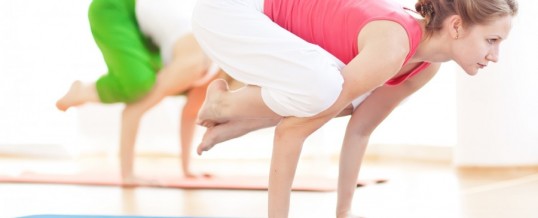
Yoga: it’s never too late to reap the benefits
Courtesy of Josephine Fairley – www.theguardian.com
Yoga can help fight stiffness, hardening of the arteries, hormonal fluctuations, depression and loss of bone density. And, says Josephine Fairley, you can start at any age,
Looking at the famous photographs of BKS Iyengar – the grey-haired, bendy-bodied yoga guru (born, so we’re told, in 1918) – might have one of two effects. First, to inspire awe at how this form of physical exercise, popularised in the west in the late 19th/early 20th centuries, can keep an individual strong and flexible, never mind at fortysomething but nudging towards a century old.
Those who can’t even touch their toes, however, may equally take one look and despair. Because at 80-plus, Iyengar (who’s still going strong) is still effortlessly touching his toes – not by bending forwards, but backwards, like a scarily supple Cirque de Soleil act.
It’s unlikely, of course, that anyone who embraces yoga in mid-life is ever going to be able to pipe-cleaner themselves into Iyengar-esque backbends. But there is certainly evidence that yoga can help fight all manner of challenges that ageing bodies (not to mention minds) face: loss of bone density, stiffness, hardening of the arteries, hormonal fluctuations, mild depression … If yoga’s starting to sound like a universal panacea – well, there are plenty of yoga teachers who’d argue it is indeed just that.
It is, so experts insist, never too late to take up yoga. One study for the University of California, Los Angeles (UCLA) School of Medicine put 21 over-60s into a hatha yoga class, once a week for 12 weeks. To qualify, they had to be suffering from ‘dowager’s hump’ (hyperkyphosis), the dreaded hunched back which interferes with normal movement. The study, published in The American Journal of Public Health, reported impressive benefits: the curvatures themselves were reduced by 6%; walking speeds went up 8%, and ‘reaches’ were improved by 18%. As a bonus, many volunteers reported their balance was better – which is worth bearing in mind by anyone who dreads toppling like a ninepin in later life.
And if you were to topple, yoga might just save you from snapping a femur. A small pilot study on bone loss in 2009 (the results of which were published in Topics in Geriatric Rehabilitation) enrolled 18 people with osteoporosis or osteopenia. After a baseline bone density test at the start, seven people were assigned to the control group, and 11 learned a 10-posture yoga sequence that included basic moves like downward- and upward-facing dog, bridge pose and triangle. Poses were maintained for at least 20-30 seconds, and the whole routine took 10 minutes or so.
After two years, a further bone density test took place: though almost every member of the control group either lost bone or maintained the status quo, around 85% of the yoga group gained it in the spine and hip. Dr Loren Fishman, who carried out the study, was shocked at the results. “By putting tremendous pressure on the bones, without harming the joints, yoga may be the answer to osteoporosis,” she said. In fact, Dr Fishman was so inspired, she went on to write a book on the subject: Yoga for Osteoporosis.
Despite BKS Iyengar’s claim that “daily practice of yoga will keep old age at bay”, it is not all we need for overall fitness. Only fast-paced practices like power yoga, astanga or bikram give the heart an aerobic workout. But anyone suffering from hot flushes, for instance, might want to think twice about attempting warrior pose in a bikram studio hotter than Hawaii. Beginners, certainly, should be wary of fast-paced classes, which in my experience give the lie to the notion that yoga isn’t competitive. They may be a fast-track to injury among novices.
Combine walking with yoga (heck, perhaps even find a studio a convenient 20-minute power walk from your home/office) and that may well prove the prescription for lifelong fitness. The bonus? You may actually be able to untie your own trainers when you get there.
• Josephine Fairley is the author of Yoga for Life.
DEC
